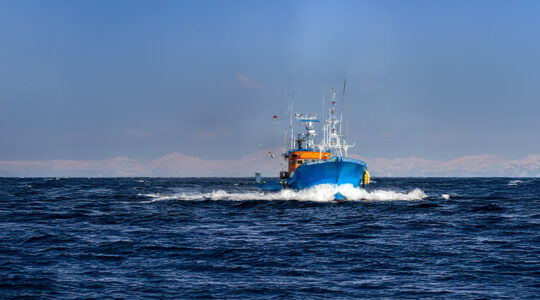
The Baltic Sea seabed is safe
The detailed research of the seabed in the area of future offshore wind farms carried out by Equinor and Polenergia in the Polish part of the Baltic Sea has been completed. The aim of the research was to detect and neutralize potential unexploded ordnance or other objects that may threaten the safety of planned work related to the foundation of wind turbines.
No objects that could pose a threat to the offshore wind farm development have been detected. Detailed studies of the seabed in the area of the planned MFW Bałtyk II and MFW Bałtyk III offshore wind farms began in August 2020 and were completed on September 30th. It is the first such extensive seabed research for unexploded ordnance in the area of future offshore wind farms in the Polish part of the Baltic Sea. The research confirmed the location of a wreck in the area, around which a safety zone was established to protect and not disturb it.
The research was conducted by MMT AB, an industry leader providing high-resolution marine surveys. To carry out the work two ships were used: Topaz Tiamat and the much smaller Ping, for shallower areas. During the work, the units and crew used the ports in Gdynia and Gdańsk, which are closest to the location of future offshore wind farms.
– Safety is our number one priority. In developing our offshore wind farm projects in Poland, we are committed to prevent harm to the environment and ensure safe construction and operations. Therefore, we take a precautionary approach towards potential unexploded ordnances in the areas of our offshore wind projects, minimizing the risk by conducting an extensive research, – says Vidar Martin Birkeland, Project Director of MFW Bałtyk II and MFW Bałtyk III projects in Equinor.
As part of preparatory work prior to construction of offshore facilities, proper identification, monitoring and potential removal of unexploded ordnance is necessary. The scope of work included gradiometric and magnetometric tests, bottom imaging with the use of Multibeam Echosounder MBES and side scan sonar SSS, and visual inspection with the use of remotely operated underwater unit (ROV). To increase the certainty of recognizing found objects, a magnetometric method is combined with visual inspection and imaging of the bottom texture. The exploration research also provides detailed data on the seabed structure and depth in the area of the planned offshore wind farm and along the planned position of the submarine cables.
Podobne wpisy

2025: Key Decisions and Milestones – The Bałtyk Projects in Focus

Signing of agreements under the compensation scheme for fishermen has commenced

